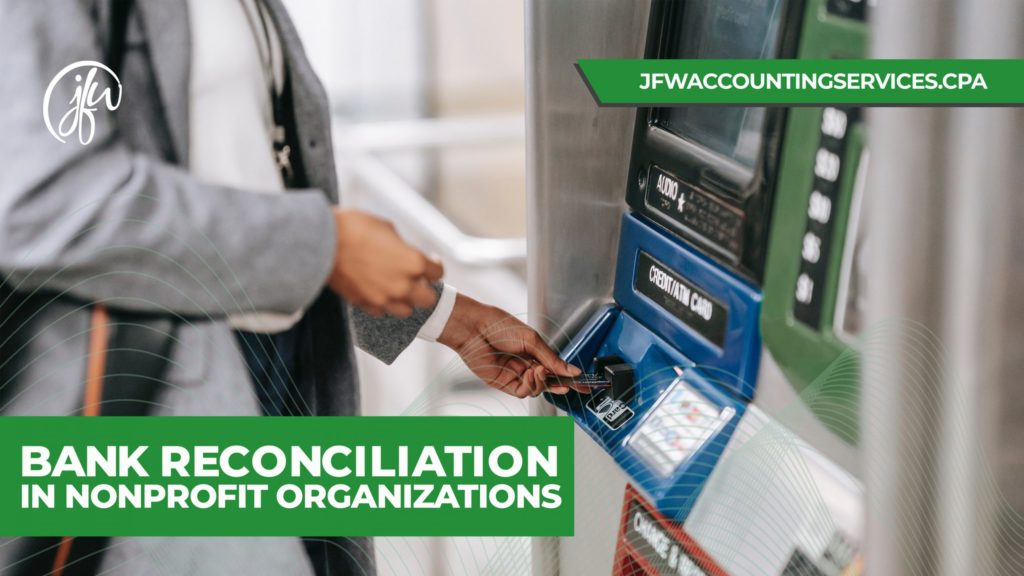Reconciliations do not have to be a headache. Keeping your nonprofit running smoothly means making sure your financial reports stay current and accurate. In order to ensure both, account reconciliations must be part of your monthly workload. Reconciling an account involves tying the account balance from your records to a source document, like a bank statement.
Why Is It Necessary To Reconcile Accounts?
When a financial account is reconciled, that means that it is verified. For the numbers in your nonprofit organization’s records to be used to create financial reports and analyze financial health, they must be accurate. Auditing agencies, donors, board members, and most other users will not be able to take your account balances at face value unless they are reconciled.
What Causes Discrepancies?
Discrepancies in accounts occur because of several reasons. There may be a discrepancy in the balance of your bank account’s balance as recorded in your records and the balance showing on the bank statement; that difference may come from an uncleared check or unrecorded interest payment. Other discrepancies may occur in any financial account because a transaction was not recorded properly. Discrepancies are going to happen, reconciling your accounts regularly allows you to correct them or explain the variance.
Other Areas To Reconcile

Bills
Bills make up the accounts payable balance. Reconciling the accounts payable account should be done on a monthly or quarterly basis. The accounts payable balance gives a total dollar amount of the short-term obligations an organization has. Regular reconciliation avoids missing paying bills because they are not recorded. Reconciling bills also ensures that no bill is paid more than once.
Invoices
Invoices make up the accounts receivable balance. They show who owes the organization money. This balance is counted as a short-term asset on your balance sheet because it is assumed the balance will be collected. Reconciling invoices ensures that the accounts receivable balance matches the actual outstanding invoices.
Fixed Assets
Things that are purchased for the nonprofit organization’s long-term use are fixed assets. These may include buildings, fixtures, equipment, software, and more. To reconcile fixed asset accounts, the balance on the internal books must be verified to another document or assessment.
Balance Sheet Accounts
Many organizations reconcile all their balance sheet accounts on a regular basis. Besides the accounts payable and receivable accounts, other balance sheet accounts include cash, security deposits, investments, expenses, and debt accounts. Cash accounts are reconciled more frequently, usually monthly.
How To Tackle The Process – Manual Or Automated?
Whether a business chooses to manually reconcile accounts or use an automated system is about preference. Manual reconciliations usually involve the accounting staff entering data from the bookkeeping records and the source documents into a spreadsheet to perform the reconciliation. For many nonprofit organizations, automating their reconciliations saves time. It also eliminates the risk of human error. Some automated accounting software can perform reconciliations by automatically extracting the necessary source data, matching transactions, and alerting staff to any discrepancies that require further action.
What Are The Account Reconciliation Steps?
The process of account reconciliation involves matching each transaction in your records with the transaction recorded on the source document. For example, when performing a bank (cash account) reconciliation, you will start with one month of bank statements and one month of records. Making sure every transaction is accounted for in both places is the goal. The ending balances should tie to each other with explanations for any variances. The exact process is customized depending on the organization’s leadership choices.
What To Do If Fraud Is Found?
Discrepancies do not mean fraud. However, researching discrepancies and variances are often how fraud is discovered. If fraud is discovered while completing an account reconciliation, you’ll want to follow the procedures to report it as outlined in the internal control policies.
In most cases, fraud can be reported according to the natural chain of command. If staff in the accounting department recognizes suspicious activity, they should report to their direct supervisor. If it is suspected that the fraud involves management, it can be reported to other management or a governing party outside of the organization. The whistleblower policy of an organization should contain specific instructions to report the fraud.
The Takeaway
Account reconciliation is an important part of any business. In order to keep your nonprofit organization operating smoothly, reconciling balance sheet accounts must be part of the accounting process. Account reconciliations support your financial reports so that your reported values can be verified. While the process of account reconciliation can be daunting, remember you are not alone.
Whether you are working through manual spreadsheets or using automated software, there is help available. Speaking with JFW Accounting Services can help you upgrade your process for better efficiency or help you understand how to outsource reconciliations if that’s a better fit for your organization. Call JFW today to see how we can help.

Jo-Anne Williams Barnes, is a Certified Public Accountant (CPA) and Chartered Global Management Accountant (CGMA) holding a Master’s of Science in Accounting (MSA) and a Master’s in Business Administration (MBA). Additionally, she holds a Bachelor of Science (BS) in Accounting from the University of Baltimore and is a seasoned accounting professional with several years of experience in the field of managing financial records for non-profits, small, medium, and large businesses. Jo-Anne is a certified Sage Intacct Accounting and Implementation Specialist, a certified QuickBooks ProAdvisor, an AICPA Not-for-Profit Certificate II holder, and Standard for Excellence Licensed Consultant. Additionally, Jo-Anne is a member of American Institute of Certified Public Accountant (AICPA), Maryland Association of Certified Public Accountants (MACPA), and Greater Washington Society of Certified Public Accountants (GWSCPA) where she continues to keep abreast on the latest industry trends and changes.

